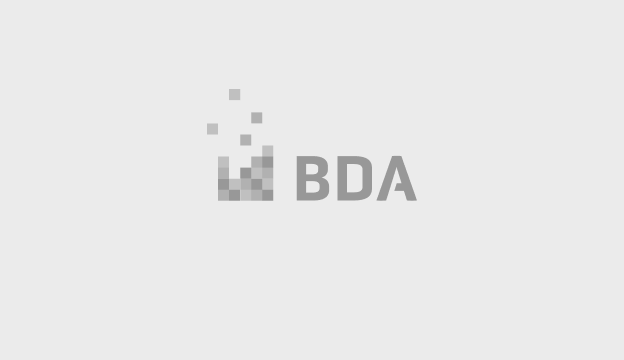VMware Horizon: Deploy and Manage V8.8
VMware Horizon Deploy and Manage V8.8 is a five-day combination course of VMware Horizon 8: Skills for Virtual Desktop Management & VMware Horizon 8: Infrastructure Administration. This training collection gives you the hands-on skills to deliver virtual desktops and applications through a single virtual desktop infrastructure platform.
Course target
You will build on your skills in configuring and managing VMware Horizon® 8 through a combination of lecture and hands-on labs. You learn how to configure and deploy pools of virtual machines and how to provide a customized desktop environment to end-users. Additionally, you will learn how to install and configure a virtual desktop infrastructure platform. You learn how to install and configure VMware Horizon® Connection Server™, VMware Unified Access Gateway™, how to configure a load balancer for use with Horizon, and how to establish Cloud Pod Architecture.
Audience
Operators, administrators, and architects for VMware Horizon should enroll in this course. These individuals are responsible for the creation, maintenance, and or delivery of remote and virtual desktop services. Additional duties can include the implementation, support, and administration of an organization’s end-user computing infrastructure.
At Course Completion
By the end of the course, you should be able to meet the following objectives:
- Recognize the features and benefits of Horizon
- Use VMware vSphere® to create VMs to be used as desktops for Horizon
- Create and optimize Windows VMs to create Horizon desktops
- Install and configure Horizon Agent on Horizon desktop
- Configure and manage the VMware Horizon® Client™ systems and connect the client to a VMware Horizon desktop
- Configure, manage, and entitle desktop pools of full VMs
- Configure, manage, and entitle pools of instant-clone desktops
- Create and use Remote Desktop Services (RDS) desktops and application pools
- Monitor the Horizon environment using Horizon Console Dashboard and Horizon Help Desk Tool
- Identify Horizon Connection Server installation, architecture, and requirements.
- Describe the authentication and certification options for a Horizon environment
- Recognize the integration process and benefits of VMware Workspace ONE® Access™ and Horizon 8
- Discuss performance and scalability options available in Horizon 8
- Describe different security options for the Horizon environment
- Describe different security options for the Horizon environment
Prerequisites
Customers attending this course should have, at a minimum, the following skills:
- Use VMware vSphere® Web Client to view the state of virtual machines, datastores, and networks
- Open a virtual machine console on VMware vCenter Server® and access the guest operating system
- Create snapshots of virtual machines
- Configure guest customization specifications
- Modify virtual machine properties
- Convert a virtual machine into a template
- Deploy a virtual machine from a template
Training materials
VMvare training materials
Certification Exam
VMware Certified Professional – Desktop and Mobility 2020 (VCP-DTM 2020).
Course outline
- Course Introduction
- Introductions and course logistics
- Course objectives
- Introduction to VMware Horizon
- Recognize the features and benefits of Horizon
- Describe the conceptual and logical architecture of Horizon
- Introduction to Use Case
- Define a use case for your virtual desktop and application infrastructure
- Convert customer requirements to use-case attributes
- vSphere for VMware Horizon
- Explain basic virtualization concepts
- Use VMware vSphere® Client™ to access your vCenter Server system and VMware ESXi™ hosts
- Create, provision, and remove a virtual machine
- VMware Horizon Desktops
- Create a Windows and a Linux virtual machine using vSphere
- Optimize and prepare Windows and Linux virtual machines to set up Horizon desktop VMs
- VMware Horizon Agents
- Outline the configuration choices when installing Horizon Agent on Windows and Linux virtual machines
- Create a gold master for Windows Horizon desktops
- VMware Horizon Pools
- Identify the steps to set up a template for desktop pool deployment
- List the steps to add desktops to the VMware Horizon® Connection Server™ inventory
- Compare dedicated-assignment and floating-assignment pools
- Outline the steps to create an automated pool
- Define user entitlement
- Explain the hierarchy of global, pool-level, and user-level policies
- VMware Horizon Client Options
- Describe the different clients and their benefits
- Access Horizon desktop using various Horizon clients and HTML
- Configure integrated printing, USB redirection, and the shared folders option
- Configure session collaboration and media optimization for Microsoft Teams
- Creating and Managing Instant-Clone Desktop Pools
- List the advantages of instant clones
- Explain the provisioning technology used for instant clone desktop pools
- Set up an automated pool of instant clones
- Push updated images to instant clone desktop pools
- Creating RDS Desktop and Application Pools
- Explain the difference between an RDS desktop pool and an automated pool
- Compare and contrast an RDS session host pool, a farm, and an application pool
- Create an RDS desktop pool and an application pool
- Access RDS desktops and application from Horizon Client
- Use the instant clone technology to automate the build-out of RDSH farms
- Configure load-balancing for RDSHs on a farm
- Monitoring VMware Horizon
- Monitor the status of the Horizon components using the Horizon Administrator console dashboard
- Monitor desktop sessions using the HelpDesk tool
- Course Introduction
- Introductions and course logistics
- Course objectives
- Horizon Connection Server
- Recognize VMware Horizon reference architecture
- Identify the Horizon Connection Server supported features
- Identify the recommended system requirements for Horizon Connection Server
- Configure the Horizon event database
- Outline the steps for the initial configuration of Horizon Connection Server
- Discuss the ADAM database as a critical component of Horizon Connection Server installation
- Authentication and Certificates
- Compare the authentication options that Horizon Connection Server supports
- Describe the Smartcard authentication options that Horizon Connection Server supports
- Outline the steps to create a Horizon administrator and custom roles
- Describe the roles available in a Horizon environment
- Explain the role that certificates play for Horizon Connection Server
- Install and configure certificates for Horizon Connection Server
- Install and configure True SSO in a Horizon environment
- Workspace ONE Access & Virtual Application Management
- Recognize the features and benefits of Workspace ONE Access
- Recognize the Workspace ONE Access console features
- Explain identity management in Workspace ONE Access
- Explain access management in Workspace ONE Access
- Describe the Workspace ONE Access directory integration
- Describe the Workspace ONE Access directory integration
- Deploy virtual applications with Workspace services
- Horizon Protocols
- Compare the remote display protocols that are available in VMware Horizon
- Describe the BLAST Display Protocol Codecs
- Describe BLAST and PCoIP ADMX GPO common configurations
- Graphic Cards
- Describe the 3D rendering options available in Horizon 8
- Compare vSGA and vDGA
- List the steps to configure graphics cards for use in a VMware Horizon environment
- Horizon Scalability
- Describe the purpose of a replica connection server
- Explain how multiple Horizon Connection Server instances in a pod maintain synchronization
- Explain Horizon Cloud Pod Architecture LDAP replication and VIPA
- Explain Horizon Cloud Pod Architecture scalability options
- Horizon Security
- Explain concepts relevant to secure Horizon connections
- Describe how to restrict Horizon connections.
- Discuss the benefits of using Unified Access Gateway
- List the two-factor authentication options that are supported by Unified Access Gateway
- List Unified Access Gateway firewall rules
- Describe the situation in which you might deploy Unified Access Gateway instances with one, two, or three network interfaces
If you want to get more information about this course, contact us by phone +371 67505091 or send us an e-mail at mrn@bda.lv.









